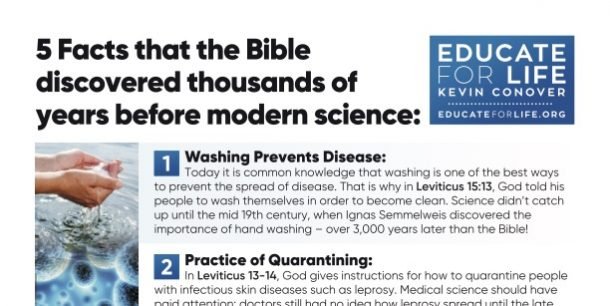Wednesday, March 27, 2013

This article was orDr. Whitehead nobody is born gayiginally posted by NARTH.com. It can be viewed at http://www.narth.com/docs/whitehead2.html
by N. E. Whitehead, Ph.D.
A constant stream of media articles–several per year–assures us that there is a link between homosexuality and biological features. These articles mention genes, brain structure, hormone levels in the womb, ear characteristics, fingerprint styles, finger lengths, verbal skills…… and by the time you read this, some others may have appeared. The headlines imply that people are born with tendencies which infallibly will make them gay or lesbian, and that change of sexual orientation will be impossible.
Individually some of these pieces are not very convincing, but the sheer volume of them suggests that they must amount to an overwhelming influence–or if not, further research will add to them and make it so. This is not true either, and we see shortly that twin studies refute it.
Twin Studies
Twin studies in their modern form investigate both identical and fraternal twins, but this article emphasizes studies of identical twins, which are sufficient for our purposes. Studies of non-identical twins are detailed elsewhere (1).
Earlier studies mostly used informal or “snowball” samples of twins recruited from gay and lesbian associations, and by advertisements (e.g. 2,3). Such studies are possibly biased by the nature of twins who volunteer, but even so, if one identical twin was homosexual, only about half the time was the co-twin concordant (i.e. also homosexual).
Better research, however, was based on twins who were recruited for other reasons, and only subsequently asked about their sexual orientation. These are known as “registry” studies, and they similarly gave a concordance rate between identical twins of less than 50%. There have been two major published registry studies (4,5), one based on the Minnesota Registry, the other on the Australian Registry. The larger of the two registry studies is the Australian one, done by Bailey, Martin and others at the University of Queensland. Using the 14,000+ Australian twin collection, they found that if one twin was homosexual, 38% of the time his identical brother was too. For lesbianism the concordance was 30%. Whether 30% or 50% concordance (snowball samples), all the studies agree it is clearly not 100%.
The critical factor is that if one identical twin is homosexual, only sometimes is the co-twin homosexual. There is no argument about this in the scientific community.
Interpretation
Identical twins have identical genes. If homosexuality was a biological condition produced inescapably by the genes (e.g. eye color), then if one identical twin was homosexual, in 100% of the cases his brother would be too. But we know that only about 38% of the time is the identical twin brother homosexual. Genes are responsible for an indirect influence, but on average, they do not force people into homosexuality. This conclusion has been well known in the scientific community for a few decades (e.g. 6) but has not reached the general public. Indeed, the public increasingly believes the opposite.
Identical twins had essentially the same upbringing. Suppose homosexuality resulted from some interaction with parents that infallibly made children homosexual. Then if one twin was homosexual, the other would also always be homosexual. But as we saw above, if one is homosexual, the other is usually not. Family factors may be an influence, but on average do not compel people to be homosexual.
Twin studies suggest that as a class, events unique to each twin–neither genetic nor family influences–are more frequent than genetic influences or family influences. But many individual family factors (such as the distant father) are commoner than the individual unique factors. Unique events would include seduction, sexual abuse, chance sexual encounters, or particular reactions to sensitive events, when young. Everyone has their own unique path which only partly follows that of the theoreticians!
A fascinating sidelight on all this comes from the work of Bailey (7). His team asked non-concordant identical twins (one was homosexual, one not) about their early family environment, and found that the same family environment was experienced or perceived by the twins in quite different ways. These differences led later to homosexuality in one twin, but not in the other.
Strength of Influences
At this point, some of you will be asking–what about the concordant identical twins who were both homosexual? Could their genes have “made them do it”?
No. It can be a strong influence for a few, but even for those few, it is never overwhelming. The record strengths for genetic influence on behaviors are 79% in a group of highly addicted women cocaine addicts (8) and about the same or somewhat higher, for ADHD (9). Because those figures are not 100%, even among addicts or those strongly pushed towards some other behavior, there is room for outside intervention and change. Hence even if homosexuality is as addictive as cocaine for a few individuals, their genes didn’t “make them do it.”
For perspective, it is valuable to compare genetic contributions to homosexuality with the question – is a girl genetically compelled to become pregnant at 15? Her genes might give her physical characteristics that make her attractive to boys – but whether she gets pregnant will depend greatly on whether her community is Amish or urban, conservative or liberal, whether they use contraceptives, and whether the parents are away for the evening.
So the influence of the genes is very indirect. We can see this by thinking further – if she was in solitary confinement all her life, would her genes make her become pregnant? Of course not! Some influence from the environment (in this case a boy) is essential! The effects of genes on behaviors are very indirect because genes make proteins, not preferences.
So the results of identical-twin studies are critical in understanding the biological influences on homosexuality. Only for physical traits like skin color are identical twins 100% concordant; otherwise they don’t necessarily follow either their parents’ genes…or their parents’ admonitions! In this, homosexuality proves to be no different from such unrelated behaviors as violence, being extroverted, or getting divorced. All may be influenced by genes, but not overwhelmingly determined by them.
Future Biological Research
Will continuing research eventually find some overwhelming biological influences to produce homosexuality, or find that added together, all the biological influences are overwhelming? No. The twin studies prove that future research will never discover any overwhelming biological factors which compel homosexuality.
Future Psychological Research
The complementary finding is just as true. There are many influences from upbringing, and probably many we have not yet discovered–but however many we find, it will always remain true (because the twin studies tell us so) that family influences will never overwhelmingly compel children to be homosexual.
Childhood Gender non-conformity (essentially strong sissiness, rather than a diagnosis of GID) is the strongest single influence ever found associated with adult homosexuality, but even this factor is not overwhelmingly compelling. 75% of a sample of extremely “sissy” boys became homosexual when followed through to adulthood (10). But we must remember they were so sissy that parents were extremely concerned and referred them to the research clinic for help. Only a small percentage of sissy boys from the general population become homosexual as adults (11). This is even more true of other factors which have been researched and publicized in the media, and leads to a another important rule of thumb: “Only a small minority of those exposed to any predisposing factor become homosexual.”
This may be a surprise to some clinicians, who may have found high percentages of sissiness, tomboyishness or same-sex parent deficits in their clients. But that is a clinical sample – out in the extra-clinical world, surveys show that only a small percentage of those with poor same-sex parent relationships become homosexual. For whatever reason those factors have often become extremely influential in such clients’ lives and must be taken very seriously; but because they are minor factors in the whole population, clinicians must not force everyone into the same box, which may be uncomfortable, or simply not fit. They must be open to any unusual factor which has been important for the specific client.
The scientific truth is – our genes don’t force us into anything. But we can support or suppress our genetic tendencies. We can foster them or foil them. If we reinforce our genetic tendencies thousands of times (even if only through homoerotic fantasy), is it surprising that it is hard to change? Similarly, we have a genetic tendency to eat, but it is possible to foster this tendency and overeat for the pleasure it brings. If we repeat that often enough, we will not only reinforce a genetic tendency to become overweight, but find that “starving” the habit takes a long time!
n summary:
1. No scientist believes genes by themselves infallibly make us behave in specified ways. Genes create a tendency, not a tyranny.
2. Identical twin studies show that neither genetic nor family factors are overwhelming.
3. Conclusion 2 will not be altered by any research in the future.
4. We can foster or foil genetic or family influences.
5. Change is possible.
References
1. Whitehead, NE; Whitehead,BK (1999): My Genes Made Me Do It! Huntington House, Layfayette, Louisiana. See alsowww.mygenes.co.nz.
2. Bailey, JM; Pillard,RC (1991): A genetic study of male sexual orientation. Arch. Gen. Psychiatry 48, 1089-1096.
3. Bailey, JM; Pillard,RC; Neale,MC; Agyei,Y (1993): Heritable factors influence sexual orientation in women. Arch. Gen. Psychiatry 50, 217-223.
4. Hershberger, SL (1997): A twin registry study of male and female sexual orientation. J. of Sex Research 34, 212-222.
5. Bailey, JM; Dunne,MP; Martin,NG (2000): Genetic and Environmental influences on sexual orientation and its correlates in an Australian twin sample. J. Pers. Social Psychology 78, 524-536.
6. West, DJ (1977): Homosexuality Reexamined. 4th ed. Duckworth, London.
7. Bailey, NM; Pillard,RC (1995): Genetics of human sexual orientation. Ann. Rev. Sex Research 6, 126-150.
8. Kendler, KS; Prescott,CA (1998): Cocaine use, abuse and dependence in a population-based sample of female twins. Brit. J. Psychiatry 173, 345-350.
9. Rhee, SH; Waldman,ID; Hay,DA; Levy,F (1999): Sex differences in genetic and environmental influences on DSM-III-R attention-deficit/hyperactivity disorder. J. Abnorm. Psychology 108, 24-41.
10. Green, R (1987). The “Sissy Boy Syndrome” and the Development of Homosexuality. Yale University Press, New Haven, Connecticut.
11. Bell, AP; Weinberg,MS; Hammersmith,SK (1981): Sexual Preference: Its Development In Men and Women. Indiana University Press, Bloomington, Indiana.


Trackbacks/Pingbacks